- Home
- Deepak Chopra
Power, Freedom, and Grace Page 2
Power, Freedom, and Grace Read online
Page 2
The essential you, your real essence, is a field of awareness that interacts with its own self and then becomes both mind and body. In other words, you are consciousness or spirit, which then conceives, constructs, governs, and becomes the mind and the body. The real you is inseparable from the patterns of intelligence that permeate every fiber of creation.
At the deepest level of existence, you are Being, and you are nowhere and everywhere at the same time. There is no other “you” than the entire cosmos. The cosmic mind creates the physical universe, and the personal mind experiences the physical universe. But in truth, the cosmic mind and the personal mind are both permeated by infinite consciousness. Infinite consciousness is our source, and all manifestation is inherent within it.
Infinite consciousness observing itself creates the notion of observer, or the soul; the process of observation, or the mind; and that which is observed, or the body and the world. The observer and the observed create relationships between themselves; this is space. The movement of these relationships creates events; this is time. But all of these are none other than the infinite consciousness itself.
In other words, we are infinite consciousness with a localized point of view. And yet our whole system of thought divides the observer from the observed; it divides the infinite consciousness into a world of objects separated by space and time. The intellect imprisons us in a cage of fictitious images, a suffocating web of space, time, and causation. As a result, we lose touch with the true nature of our reality, which is powerful, boundless, immortal, and free.
We are all prisoners of the intellect. And the intellect’s mistake in one simple sentence is this: It mistakes the image of reality for reality itself. It squeezes the soul into the volume of a body, into the span of a lifetime, and the spell of mortality is cast. The image of the self overshadows the unbounded Self, and we feel cut off or disconnected from infinite consciousness, our source. This is the beginning of fear, the onset of suffering, and all of the problems of humanity, from our minor insecurities to our major catastrophes, such as war, terrorism, and all other acts of human degradation. To one who is trapped in the prison of the intellect, all is indeed suffering. But the cause of this suffering can be averted. Ignorance of our real nature causes the inner self to be obscured. But when ignorance is destroyed, the powerful, unbounded nature of the inner self is revealed.
At first this may sound strange and abstract, but as you bear with this notion and understand it, you realize the most dramatic discovery: The real you is nonmaterial and therefore not subject to the limitations of space, time, matter, and causation. The soul, the spirit, the essential you, is beyond all that. In this very moment, you are surrounded by a field of pure consciousness. Pure consciousness illuminates and animates your mind and body, and it is powerful, nourishing, invincible, unbounded, and free. Pure consciousness, the eternal spirit, animates everything in existence, which means it is omniscient (all-knowing), omnipresent (present in all locations simultaneously), and omnipotent (all-powerful).
Now, if you don’t fully comprehend this, don’t worry about it. In the following chapters we will take a closer look at the different expressions of the spirit, the inner self, the source of all that is. As you read these pages, you will get a better understanding of who you really are. Once you have fully grasped this understanding, your life will be established in joy. Not only will you have the power to accomplish all that you want, but you will also have true freedom and grace. This means you will never experience fear, not even the fear of death.
KEY POINTS
You are a field of awareness; your real essence is pure consciousness, or spirit, which becomes both the mind and the body.
The intellect mistakes the image of reality for reality itself, and this image overshadows the real you.
When you identify with your real essence, you escape the prison of the intellect, and enter the world of the infinite, unbounded, and free.
3
Why do I forget who I am?
Superstition:
A belief based on fear or ignorance of the laws of nature.
What is this thing that we call our body; what is this thing that we call our mind? As we will see, our traditional ideas of the body and mind are based on obsolete notions or superstitions that we’ve learned to believe in. Sensory experience and social conditioning cause us to forget who we are. There is a deeper reality to the body; there is a deeper reality to the mind. And that deeper reality is what we want to experience, because out of that reality come both the body and the mind.
Quantum physics tells us that the world is composed of one underlying field of intelligence that manifests as the infinite diversity of the universe. The field of intelligence experienced subjectively is the mind; the same field experienced objectively is the world of material objects. Mind and matter are not separate entities; mind and matter are essentially the same. Our essential being, stripped of the superficial layers of mind and body, is neither mind nor matter but the source of both. In other words, the human body is the human mind at the same time. We are actually a body-mind; we can’t really separate the two. Nor can we confine the mind to the brain or even to the body, because the mind extends beyond our body into the whole universe.
The superstition of materialism says the human body is a solid clump of matter separated from other objects in space and time. But “solid” objects are not solid at all, nor are they separate from one another in space and time. Objects are focal points, or concentrations of intelligence, within the field of intelligence. At the most fundamental levels of nature, there are no well-defined edges between our personal body and that of the universe. Knowing this frees us from the hallucination of a separate self that lives inside a separate body.
If we could see the body through the eyes of a physicist, as it really is, we’d see a huge empty void with a few scattered dots and some random electrical discharges. The body is made up of atoms, which in turn are made up of particles that whirl at dizzying speeds around huge empty spaces. Physicists have fancy names for these particles, such as leptons, quarks, mesons, and so on. These particles give us the experience of matter through our senses, but they are definitely not material entities. These particles are fluctuations of information and energy existing in a huge void. The particles constantly emerge from the void, come into creation, rebound, collide, and then disappear back into the void.
The field of intelligence responsible for the material expression of the body is mostly quantum fluctuations in empty space. The human body itself is mostly empty space, but that empty space is not an emptiness made up of nothing; it is a fullness of nonmaterial intelligence. It is pure consciousness.
The essential point is that our real nature is a nonmaterial field of intelligence. Some scientists call this essential ground of our being the unified field, because it’s the field of the whole universe. And when this field of intelligence thinks and interacts with itself, the material world comes out as its expression.
The superstition of materialism sees the human body as a frozen sculpture fixed in space and time, but the body-mind is actually a changing, pulsating pattern of intelligence. It is a river of energy and information — a fluid, dynamic, and ceaselessly changing pattern of energy that constantly re-creates itself. The Greek philosopher Heraclitus said, “You cannot step into the same river twice because new water is flowing in.” Likewise, we cannot step into the same body twice because in every second of our existence our personal body is exchanging energy and information with our extended body, the universe.
If we take any process — such as breathing, eating, digestion, metabolism, even thought, which is fundamentally a fluctuation of energy and information in the body — we see how dramatically, how rapidly, and how effortlessly we renew our body in every second of our existence.
With each breath we inhale billions of atoms that ultimately end up as heart cells, kidney cells, brain cells, and so on. With each breath we exhale bits and pieces of o
ur tissues and organs and exchange them with the atmosphere of this planet. Radioactive isotope studies show that the body replaces 98 percent of all its atoms in less than one year. The body makes a new stomach lining every five days, a new skin once every month, a new liver every six weeks, and a new skeleton every three months. Even our DNA, the genetic material that holds memories of billions of years of evolution, wasn’t the same six weeks ago. So if you think you are your physical body, which body are you talking about? The body you have today is not the same one you had three months ago.
The superstition of materialism sees the body as a physical machine that has somehow learned how to think, but in fact infinite consciousness somehow creates the mind and then expresses itself as the body. The body is a pattern of intelligence in a field of pure consciousness. Out of this field of consciousness, this mostly “empty space” of our body, emerge thoughts, feelings, and emotions, which then become the molecules of the body.
Thought, at a primordial level, is an impulse of energy and information, and it comes from the field of pure consciousness. Thought is that faint impulse we experience all the time in our awareness, motivating us to drink a glass of water or to walk from here to there. But it’s not just a thought; it’s a feeling, a desire, an instinct, a drive, a notion, an idea. At this level of existence, as we think, we make molecules, and scientific research has shown how true this is.
When we have a thought or a feeling, our brain makes a set of chemicals known as neuropeptides — neuro because they were first found in the brain; peptides because they are protein-like molecules. This is how brain cells speak to one another — not in the English language, but in the language of chemical messengers from inner space. Scientists tell us that there are receptors to these chemical messengers on the surface of brain cells. When a brain cell wants to speak to another brain cell, it manufactures neuropeptides that latch onto the receptor sites on other brain cells. So to think is to practice brain chemistry.
But when scientists look elsewhere in the body, they find receptors to these chemical messengers that are the equivalent of thought in other parts of the body. These receptors are not only in brain cells but in stomach cells, in heart cells, in colon cells, in kidney cells, and so on throughout the body. Stomach cells, heart cells, and other cells generate the same chemicals that the brain makes when it thinks. So we have a thinking body.
We can’t imprison the mind in the brain; the mind is in every cell of the body. When we say, “I have a sad heart” or “I’m bursting with joy,” we’re speaking truthfully, because that is what’s happening at the chemical level, the most fundamental level, in a cell. Or when we say, “I have a gut feeling about something,” we’re not speaking metaphorically, we’re speaking literally, because our gut makes the same chemicals that our brain makes when it thinks. In fact, our gut feeling may be more accurate than our intellect, because presumably gut cells have not yet evolved to the stage of self-doubt.
When we’re feeling tranquil, our body is making a tranquilizer similar to the one drug companies make, only it doesn’t make us feel like a zombie. When we’re feeling anxious, our body is making jittery molecules, and they’re not just made in the adrenal glands; they’re made everywhere in the body. When we’re feeling exhilarated, our body is making immunomodulators that act as powerful anticancer drugs. The cells of our immune system, which protect us from cancer, infectious disease, and degenerative disorders, also have receptors to chemical messengers that are the material equivalent of thought. The immune system is a circulating nervous system; it’s intelligent, and it’s moving around in the body. So we can’t have a thought, or a feeling, or a desire without our immune cells knowing about it. The immune cells are actually eavesdropping on our internal dialogue.
When we’re thinking, when we’re dreaming, when we’re just having the vaguest impulse of intelligence in our awareness, the immune cells are listening and making the same chemicals the brain makes when it thinks. The immune cells are conscious little beings with their own notions, their own intelligence, their own emotions.
Now this might sound very esoteric to you, but it’s a scientific fact. You have a thinking immune system that knows how to discriminate between a friendly bacterium and an unfriendly bacterium, between a carcinogen and a harmless chemical. When your body encounters a bacterium, even though it has never encountered that bacterium before, it remembers the first time a human encountered that bacterium in the evolutionary history of the species, and it makes the precise antibody for that bacterium.
You have an inner pharmacy that is absolutely exquisite. You name it — the body can make it in the right dose, at the right time, for the right organ, with no side effects, and all the instructions are contained in the packaging. This capacity demonstrates profound intelligence, and in fact your whole body is this field of intelligence.
But what does all this have to do with power, freedom, and grace? If you really understood that who you are is the same field of intelligence that creates the body, the mind, and the entire cosmos — if you could know this intellectually and experientially — then why would you not have the power to manifest? Why would you not have the freedom of unbounded consciousness? How could you not live in grace? If you really understood who you are, then what part of pure consciousness would be unavailable to you? You would know your own self as the observer and the observed, the dancer and the dance, the desire and its fulfillment. You would know that you are a field of pure potentiality with the power of creation.
There is an ancient saying from India: “Going back within myself, I create again and again. I create the mind, I create the body, I create perceptions, I create the universe. I create all those things that I call reality.”
Once you know that your body-mind is a field of pure consciousness, you no longer cling to the transient and unreal. You no longer recoil in fear of it either. You feel free as a leaf in the wind, as free as the wind itself. And there is nothing more valuable than the freedom of pure, unbounded consciousness. This freedom, this liberation, is enlightenment.
Vedanta declares, “Know that one thing by knowing which everything else is known.” For one who knows the Self, the limitations of the world disappear.
KEY POINTS
You forget who you are because you have been socially conditioned to trust your senses and to believe in the superstition of materialism.
You are inseparable from the field of intelligence that creates the entire cosmos. Knowing this frees you from the hallucination of a separate self that lives inside a separate body.
When you realize that your body-mind is a field of pure consciousness, then you know that you have power, freedom, and grace. Therefore, happiness is knowing your true nature, which is all of these things.
4
How do I participate in creating my reality?
Causation:
The act of causing; anything producing an effect.
Our senses tell us that events happen within space and time. There is a past, present, and future, and the world operates through linear cause-effect relationships. So every time I make a choice, I cause an effect, and that effect becomes the cause of another effect. Things have to happen one at a time. I have to walk from here to there, from one location to another. This causes a timeline to appear.
That is how our senses experience the world, but in fact the world is not like that. The world is synchronistic, it’s coincidental, it’s happening simultaneously. Infinite possibilities coexist at the same time. Everything is happening all at once, and everything is correlated and instantly synchronized with everything else. This simultaneity can only happen through what is called infinite correlation. Infinite correlation is the ability to do an infinite number of things and correlate them with one another at the same time.
The human body is the best example of infinite correlation because it’s a field of simultaneity where physics, chemistry, biology, and mathematics all come together to create the experience of life. T
he body has a hundred trillion cells, which is more than all the stars in the Milky Way galaxy. Each cell is doing countless things per second, and it instantly knows what the other cells are doing and correlates its activity with all the other cells. There’s no time for one cell to tell another cell, “Listen, I’m going to digest food; you wait a while, and don’t think thoughts for now.” Our stomach cells are digesting food, while our brain cells are thinking thoughts, while our gallbladder is making bile, while our immune system is killing germs. The cells not only do more than one thing at a time, but they all keep track of what the others are doing; otherwise there would be a great deal of confusion in the body.
At the same time that it’s correlating all these activities, our body is monitoring the movement of the Earth, the moon, the planets, the stars, and the entire cosmos. Our body, our mind, our emotions — everything in our physiology is changing moment to moment, depending on the time of the day, the cycles of the moon, the seasons, and even the tides.
Our body is part of the universe, and everything that happens in the universe ultimately affects the physiology of our body. Biological rhythms are an expression of the rhythms of the Earth in relationship to the entire cosmos, and four of these rhythms — daily rhythms, tidal rhythms, monthly or lunar rhythms, and annual or seasonal rhythms — are the basis of all of the other rhythms in our body.

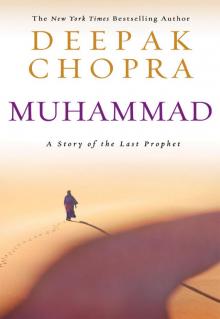 Muhammad: A Story of the Last Prophet
Muhammad: A Story of the Last Prophet Buddha
Buddha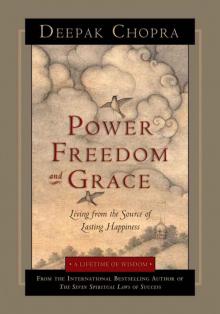 Power, Freedom, and Grace
Power, Freedom, and Grace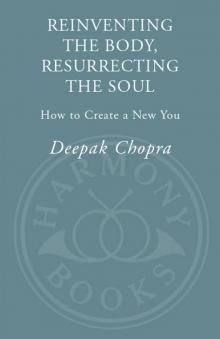 Reinventing the Body, Resurrecting the Soul: How to Create a New You
Reinventing the Body, Resurrecting the Soul: How to Create a New You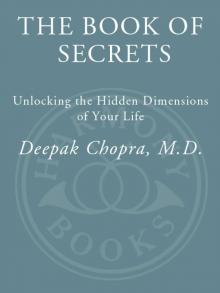 The Book of Secrets: Unlocking the Hidden Dimensions of Your Life
The Book of Secrets: Unlocking the Hidden Dimensions of Your Life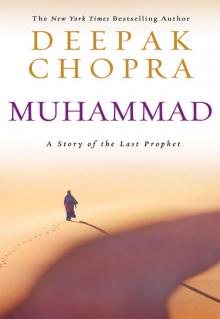 Muhammad
Muhammad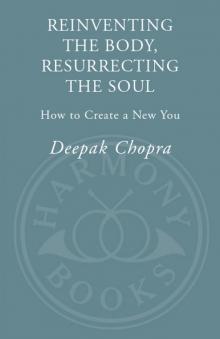 Reinventing the Body, Resurrecting the Soul
Reinventing the Body, Resurrecting the Soul